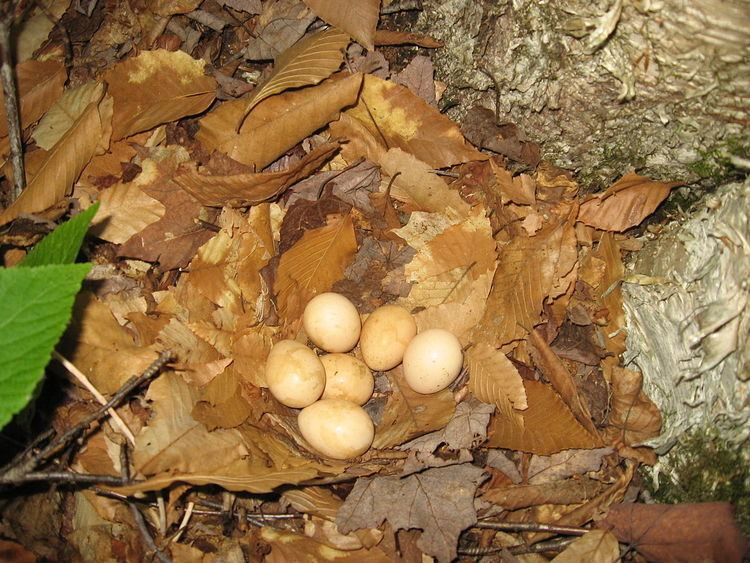 | ||
Biological bet hedging, analogous to hedging in finance, occurs when organisms suffer decreased fitness in "normal" conditions in exchange for increased fitness in stressful conditions. Biological bet hedging was originally proposed to explain the observation of a seed bank, or a reservoir of ungerminated seeds in the soil. For example, an annual plant's fitness is maximized for that year if all of its seeds germinate. However, if a drought occurs that kills germinated plants, but not ungerminated seeds, plants with seeds remaining in the seed bank will have a fitness advantage. Therefore, it can be advantageous for plants to "hedge their bets" in case of a drought by producing some seeds that germinate immediately and other seeds that lie dormant. Other examples of biological bet hedging include female multiple mating, foraging behavior in bumble bees, nutrient storage in rhizobia, and bacterial persistence in the presence of antibiotics.
Contents
Categories of Bet-Hedging
There are three categories (strategies) of bet-hedging: "conservative" bet-hedging, "diversified" bet-hedging, and "adaptive coin flipping."
Conservative Bet-Hedging
In conservative bet-hedging, individuals lower their expected fitness in exchange for a lower variance in fitness. The idea of this strategy is for an organism to "always play it safe" by using the same successful low-risk strategy regardless of environmental conditions. An example of this would be an organism producing clutches with a constant egg size that may not be optimal for any environmental condition, but result in the lowest overall variance.
Diversified Bet-Hedging
In contrast to conservative bet-hedging, diversified bet-hedging is where individuals lower their expected fitness while also increasing the variance of survival within offspring. This strategy uses the idea of not "putting all of your eggs in a basket." Individuals implementing this strategy actually invest in several different strategies at once, resulting in low variation in total success. This would be exemplified by a clutch of eggs of different sizes, each optimal for one potential environment of the offspring.
Adaptive Coin Flipping
An individual using this type of bet-hedging chooses what strategy to use based on a prediction of what the environment will be like. Organisms using this form of bet-hedging make these predictions and select strategies every year. Adaptive coin flipping is the most successful bet-hedging strategy and, unlike the other two strategies, isn't concerned with minimizing the variation in fitness between years. In adaptive coin-flipping, an organism may produce clutches of different egg sizes from year to year, increasing variation in offspring success between clutches.
Evolution of Bet-Hedging
Bet-hedging is understood to be a mode of response to environmental change. Adaptations that allow organisms to survive in fluctuating environmental conditions provide an evolutionary advantage, despite the cost of traits not being optimized for normal conditions. Over time, individuals that use bet-hedging strategies are more likely to survive in dynamic environments than individuals optimized to live in a stable environment, thus various bet-hedging strategies have evolved across many species.
Bet hedging traits are, by definition, neutral or slightly deleterious in the "normal" environment, and beneficial in a less common, often more stressful environment. Therefore, the conditions under which a bet-hedging allele may be favored due to natural selection are slightly more complicated than for a globally advantageous allele. First, a bet hedging mutant must persist in the "normal" environment due to genetic drift long enough for the alternative environment, in which the bet-hedger has an advantage, to occur. At that point, selection may sweep the allele to fixation.
Prokarya
Experiments in bet-hedging using prokaryotic model organisms provide some of the most simplistic views of the evolution of bet-hedging. As bet-hedging involves a stochastic switching between phenotypes across generations, prokaryotes, display this phenomenon quite nicely due to their ability to reproduce quickly. This has allowed for the study of bet-hedging within the most simplistic of organisms and allow us to deduce the evolutionary origins of bet-hedging.
Within prokarya, there are numerous examples of bet-hedging phenomena. In one example, the bacterium Sinorhizobium meliloti stores carbon and energy in a compound known as poly-3-hydroxybutyrate (PHB) in order to withstand carbon-deficient environments. When starved, S. meliloti populations begin to display bet-hedging by forming two non-identical daughter cells during binary fission. The daughter cells display either low PHB levels or high PHB levels, which are better suited to short and long-term starvation, respectively. It has been reported that the low-PHB must be competitive for resources, whereas the high-PHB cells can survive for over a year without food. In this example, the PHB phenotype is being ‘bet-hedged’, as the survivability of the offspring largely depends on their environment,where only one phenotype is likely to survive under specific conditions
Bet-hedging in prokarya is of importance to the field of medicine due to bacterial persistence. Because bet-hedging is designed to produce genetically diverse offspring randomly in order to survive catastrophe, it is difficult to develop treatments for bacterial infections, as bet-hedging may ensure the survival of its species within its host, heedless to the antibiotic.
An example of persistence as a method of bet-hedging arises in Mycobacterium tuberculosis. In a given population of this bacteria, persister cells exist with the ability to arrest their growth, which leaves them unaffected by dramatic changes to the environment. Once the persistor cells grow to form another population of its species, which may or may not be antibiotic resistant, they will produce both cells with normal cell growth and another population of persisters to continue this cycle as the case may be. The ability to switch between the persister and normal phenotype is a form of bet-hedging.
